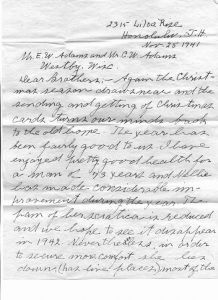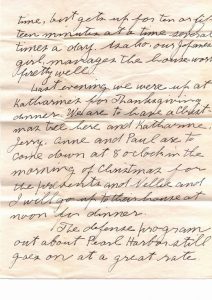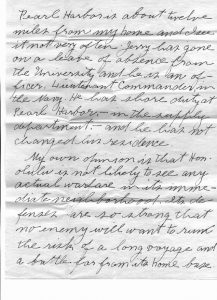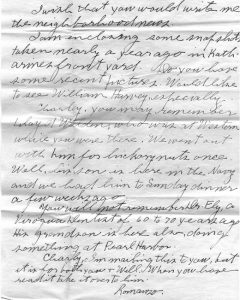Biographical Sketch of Romanzo Adams and History of the Romanzo Adams Social Research Laboratory
Romanzo Adams Biographical Sketch
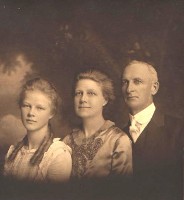
Romanzo Adams was born in Clinton Township, Vernon County, Wisconsin on 22 March 1868. Vernon County lies just south of La Crosse city and county, on the east bank of the Mississippi River opposite the boundary between Iowa and Minnesota. Romanzo Adams attended Iowa State Normal School1 in Cedar Falls, Iowa, graduating in 1892. He received a bachelor’s degree (PhB) in 1897, followed by a masters degree (PhM) in 1898, both from the University of Michigan. He received a PhD from the University of Chicago in 1904. Adams filled the gaps in his attendance at normal school and the universities with his developing career of teaching. Following his normal training, Adams became teacher and principal at the public school in Ireton, Iowa, for two years. Following his education at the University of Michigan, Adams taught economics and sociology at Western College2, in Toledo, Iowa for two years. From 1900 to 1902, we do not know with certainty what he did, but probably began his studies at the University of Chicago during this time. On 16 September 1902, Romanzo Adams married Nellie May Cronk, a recent graduate from Western College. Beginning in the fall of 1902, Romanzo Adams joined the faculty of the University of Nevada. From 1911, he was chair of the department of economics and sociology at Nevada. While living in Reno, Romanzo and Nellie became the parents of Katherine, their only child, who was born 22 October 1904.
In 1920, Romanzo Adams became professor of sociology at the same time the College of Hawaiʻi became the University of Hawaiʻi. In time, others joined him. Dr. Park from the University of Chicago spent a summer at the University of Hawaiʻi; Dr. Andrew Lind came to Hawaiʻi (1927) after completing most of the work on his doctorate at Chicago. Dr. Bernhard Hoermann and Dr. Kiyoshi Ikeda, to mention only two, began their careers in sociology as undergraduates at UH, then attended the University of Chicago prior to returning to the University of Hawaiʻi to join the Department of Sociology. The impetus of what became the Romanzo Adams Social Research Laboratory came from Dr. Adams. Early in his career Adams began to involve his students in exploring the sociological lode star which was Hawaiʻi. From the mid 1920s, the faculty were collecting student studies and creating research files of news clippings concerning Hawaiʻi‘s social milieu. In 1934, Dr. Adams retired from full time teaching and directing the department and Laboratory.
Shortly before the Japanese attack on Pearl Harbor, Dr. Adams wrote his two brothers living in Westby, Wisconsin. In the letter, he talks about people who have come to Honolulu from the Adams’ home area: the son of a person who attended Western the same time his brother did; and the grandson of an old dentist in the county seat of Vernon County, Wisconsin. Gathering from Romanzo’s words to his brothers, it appears that he was older than they. Of particular interest are Dr. Adams’ comments about the likelihood of an attack upon Honolulu. Within a year of writing this letter, Dr. Adams died in Honolulu on 8 September 1942.
Romanzo Adams Social Research Laboratory History
The Romanzo Adams Social Research Laboratory (RASRL) grew out of the research conducted by the Sociology program at the University of Hawaiʻi under the direction of Dr. Romanzo Adams. In 1920, Dr. Adams had become the University of Hawaiʻi‘s first professor of sociology and economics. During the 1930s, the laboratory became known informally as the Sociology Laboratory. Dr. Adams remained the guiding inspiration of the sociological work performed by faculty and students at the University. Dr. Adams retired from the University in May 1934, but continued active professionally for some time. Dr. Andrew Lind took over the direction of the sociology program at the University upon Dr. Adams retirement. During World War II the University Board of Regents renamed the Laboratory the War Research Laboratory, reflecting the work the Laboratory was performing under the Military Government in morale, race relations, labor relations, etc. After the War the focus of the lab shifted back from the war-related research to the emphases it had had prior to the war: race relations, cultural institutions, interracial marriage; and the lab was renamed the Hawaiʻi Social Research Laboratory. In 1955, the organization was named the Romanzo Adams Social Research Laboratory as a memorial to him.
The primary focus of the research program of RASRL has always been race relations. Since race relations is a factor in all facets of society, however, the RASRL research program has addressed many related topics: population, cultural conflict, the impact of the war on territorial Hawaiʻi society, industrial relations, the changing family, and social disorganization. The research program covered over forty years of social history in Hawaiʻi. The most notable aspect of the program is the cumulative character of the research. The forty years of activity resulted in the accumulation of subject files, reports, student papers, news clippings, statistical data, population charts, and maps. The Laboratory was also responsible for numerous studies, primarily appearing in the pages of Social Process in Hawaiʻi and in the less formally published What People in Hawaiʻi are Saying and Doing.
During the academic year 1960/61, Dr. Bernhard Hörmann served as acting director of RASRL. In 1961, Dr. Lind resigned from the directorship of RASRL as he had accepted the appointment as acting director for the newly created Social Science Research Institute; in October of that year, Dr. Hörmann became the director of RASRL.
Over the next couple of years, much discussion occurred concerning the role of RASRL and of the SSRI, the focus of which was interdisciplinary research among the social sciences and humanities without geographical limits. A memorandum from Dr. Hörmann to the faculty of the Department of Sociology in October 1963 indicated that, as Director of RASRL, he was “giving his complete support” to the move of the University administration to merge RASRL into the SSRI. A letter from the Hawaiʻi Chapter of the American Statistical Association dated February 1964, however, expressed regret that the University was abandoning the focused research on Hawaiʻi conducted by RASRL throughout its existence.
Many of the scholarly activities of the sociology professors related to RASRL continued after the Laboratory ceased to function. Professors continued collecting student papers. Some clipping of newspaper articles continued. Certainly research into the sociology of Hawaiʻi‘s population continued. One mark, however, that seems to indicate the end of RASRL was the ceasing of publication of Social Process in Hawaiʻi in 1963, though the journal was resurrected in 1979. Currently, the Andrew W. Lind Social Process in Hawaiʻi Fund, established in 1986, supports the publication of Social Process in Hawaiʻi. Complete runs of Social Process in Hawaiʻi and of What People in Hawaiʻi are Saying and Doing are available at the Hawaiian Collection, Hamilton Library, 5th Floor. In addition to Dr. Adams, Dr. Lind, and Dr. Hörmann, other sociologists contributed significantly to the work of RASRL, including Dr. Clarence Glick, Dr. Yukiko Kimura, Dr. Harry Ball, and Dr. Kiyoshi Ikeda.
For additional information see Directory of American Scholars: A Biographical Directory (New York: R.R. Bowker, 1952-), Bernhard L. Hörmann, “Sociological Research at the University of Hawaiʻi,” Social Process in Hawaiʻi, 19, 1955, and Vickie Ong, “Andrew Lind Dies — A Distinguished Hawaiʻi Sociologist.” Honolulu Advertiser, 3 September 1988, A3.
Notes
1Frequently, normal school training into the second decade of the twentieth century was equivalent to our high schools.
2Western College was founded by the Evangelical United Brethren in 1856 in Toledo, Iowa. It seems that the same denomination started Leander Clark College in the same town the following year. Encyclopaedia Britannica Eleventh Edition, s.v. “Iowa” under the section Education lists the private schools in the state. If the list is correct and not a typographical error, the existence of the two schools suggests a split within the governing body of the school leading to the founding of a second school. Both schools apparently survived until the publishing of this edition of Encyclopaedia Britannica in 1911. The 1968 edition makes no mention of either college.

